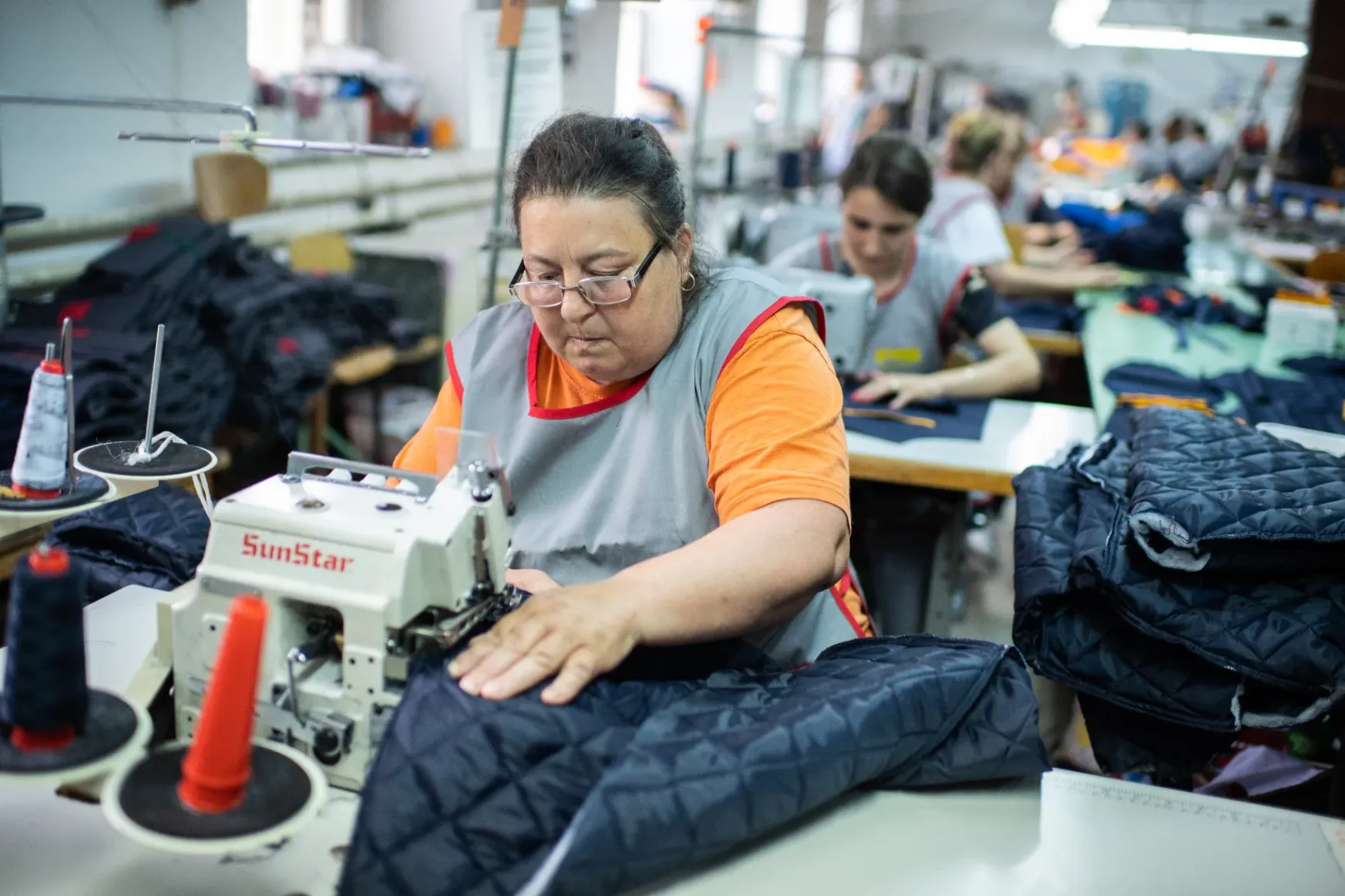
What has yet to be outsourced to Asia is sewn here
This is the third installment in our series of articles exploring the situation of seamstresses and through them the entire light industry – or as it is more commonly known: the TCLF sectors (textiles, clothing, leather, and footwear). The combined effort of five journalists, including two Polish and two Hungarians from Vojvodina (in Serbia), this article aims to present the overall situation in Central and Eastern Europe by covering two other countries in addition to Hungary. Our investigative approaches were to some extent different, but we ultimately came up with very similar results, which are laid out in this article.
"A skilled seamstress is worth more than diamonds these days. She can easily change workplaces and have her pick from various offers." Despite being uttered at a sewing factory in Poland, the seemingly contradictory situation tied to this phrase was witnessed in both Serbia and Hungary as well: although the apparel industry is flooded with orders, there are still not enough seamstresses and industry professionals to meet the demand. Meanwhile, those who remain are mostly underpaid, uninformed about their rights, and seem to approach their work according to the socialist attitudes from decades past. Laborers in all three countries mostly shrugged off the often exploitative working conditions and low wages, saying, "It's not much, but we ought to be happy with the little we get." Regardless of the country, we also often heard the same phrase, usually accompanied by a resigned sigh: "Things could always be better!" It is as if the lack of appreciation and the resulting defeatism that has been ingrained in the female workforce hasn't been eroded after 30 or 40 years.
"There's no sloppy work here!"
A giant plastic horse's head guards the entrance to the Joan Sewing Company in Łódź, as the gray, three-story office building also houses a shop selling riding gear, a bathroom showroom, and a machine embroidery company. The Joan sign is barely noticeable, but this doesn't reflect a lack of significance: after all, Joan boasts 40 years of experience in the industry. "We have had the opportunity to work with renowned European brands and designers," the company advertises itself on Lewiatan, the website of the Polish Trade Chain. According to Fashion Facility Checker, a specialized watchdog agency in this field, Joan sews for the German Otto Group, among other companies.
When the Polish journalist, who introduced herself as a seamstress looking for a job, was greeted by the owner of the company, she said that she had worked in a sewing company in her hometown, had experience in folding, ironing, and packaging clothes, and was now looking for a job.
Łódź is a large city in the heart of Poland with a population of around 700,000, surrounded by a region with a long history in the light industry. One of our Polish colleagues knocked on the door of seven sewing companies in August. To protect themselves from potential litigation, the journalists recorded all of their conversations.

"When would you like to start the probationary period? Perhaps even as soon as tomorrow?" said the owner of the Joan Sewing Company, getting straight to the point. "We'll set you up with a two-week probationary period, which you'll obviously get paid for. During this period you'll get paid 17 złotys an hour, and then we'll talk again when the two weeks are up. The workday is 8 hours long and twice a month you come in on Saturday too," said the owner, concluding the discussion. 17 złotys is equal to about 3.70 EUR.
And that's how the journalist got a job at one of the biggest sewing companies in the area. There was no contract for her for to sign, no talk of insurance, and she would get paid under the table a sum less than the minimum wage – which in Poland is currently 21 złoty (4.60 EUR) per hour, excluding contributions.
Not only did she record her first day at work, but she also described it. The hall of the sewing facility is filled with large fabric cutters and sewing machines, and racks of thick coats, shorts, colorful jackets, and elegant, pink dresses with padded shoulders. On one long rack is a tag with the word "WEILL". On a nearby table, there are camouflaged garments decorated with a Polish flag. About forty workers are bustling around the room: mostly women between the ages of 30 and 40, as well as a few older individuals. There are hardly any men.
The manager wheels over to her a cart with dozens of shorts. Her task: check the size of each pair, spread it out, fold it up from the crotch, and roll it up from the bottom. Next, pair the shorts with the gray shirts that have already been packed. Then put it all in a plastic bag and put a sticker on it. The set: short-sleeved T-shirt and shorts. The T-shirt is gray with the red coat of arms featuring an eagle and the words "Polish Army" on the chest. Twenty of these packages are to be placed in a box and sealed. Then, repeat – all day long.
The room doesn't get any fresh air. The journalist takes off her sweatshirt because she can already feel her glasses slipping off her nose and the plastic wrapping sticking to her sweaty palms. According to her new colleagues, most people there work 10 hours a day: from 6 am to 4 pm.
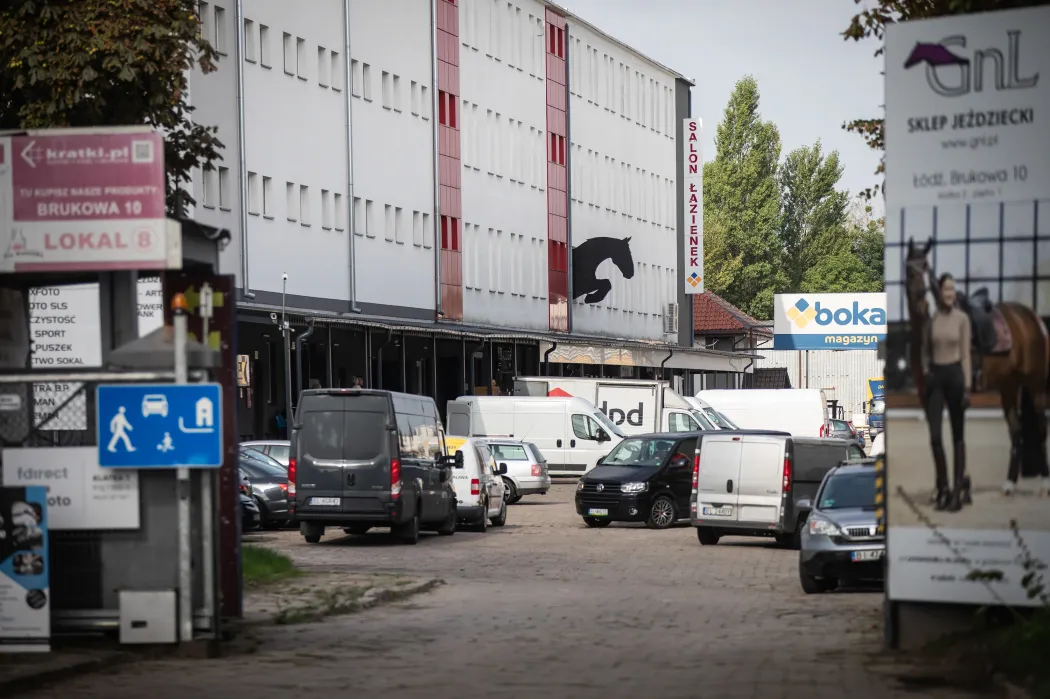
The supervisor doesn't talk to her but just gives out short orders: "Not like that!", "We don't leave those things there!", "There's no sloppy work here!", "Here!", “Take this!”
Thick pieces of fabric are being cut behind her. A loud, high-pitched, intermittent, rattling noise fills the space, practically embedding itself into her head. There is little conversation amid the racket. Speech is kept short as everyone is focused on their task.
"The girl who worked here before you used to pack 350 to 400 units a day," remarks the supervisor to her. The journalist packed 60 units in three hours, so she picks up the pace. At first, she checked to see if the legs were folded up and the material was not wrinkled. But she had to step it up. She checks the size, shakes it, folds it, puts the T-shirt on it, puts it in the bag, presses it down, expels the air, closes the bag, puts the sticker on it, and voila. If only one short leg is folded up, then the whole thing has to be unwrapped and redone from the beginning. That's three minutes wasted.
With time, she becomes more and more efficient, but it is still considered too slow. She begins to feel as if she is seeing Polish army shorts everywhere. She even starts to doubt whether she has checked the size of the shorts. She's not even sure how many T-shirts she put in the box. Fifteen? Or twenty? She recounts, but that wastes precious minutes.
By half past eleven she's very hungry. No one is stopping her from taking a break, but she knows that she works slowly, so she feels like she has to hurry. Around one o'clock she takes her pastry from the cupboard and takes a seat in the dining room. There are several women around her, quickly eating what they have brought with them. Three of them are conversing with hand gestures. She goes back to her table. Slowly the number of boxes starts to dwindle. A new coworker tells her that she is paid by the hour, while the seamstresses are paid according to the pieces they complete.
She has been working for a day and still doesn't have a contract, however, the young lady in the office gives her an entry card to the hall. For some reason, no one answers her questions about her salary, such as whether she will have paid time off or sick leave. Will she get paid separately for overtime and weekend work? The head of the company doesn't want to talk about the salary at all: when she runs into him at the reception, he's suddenly in a hurry.
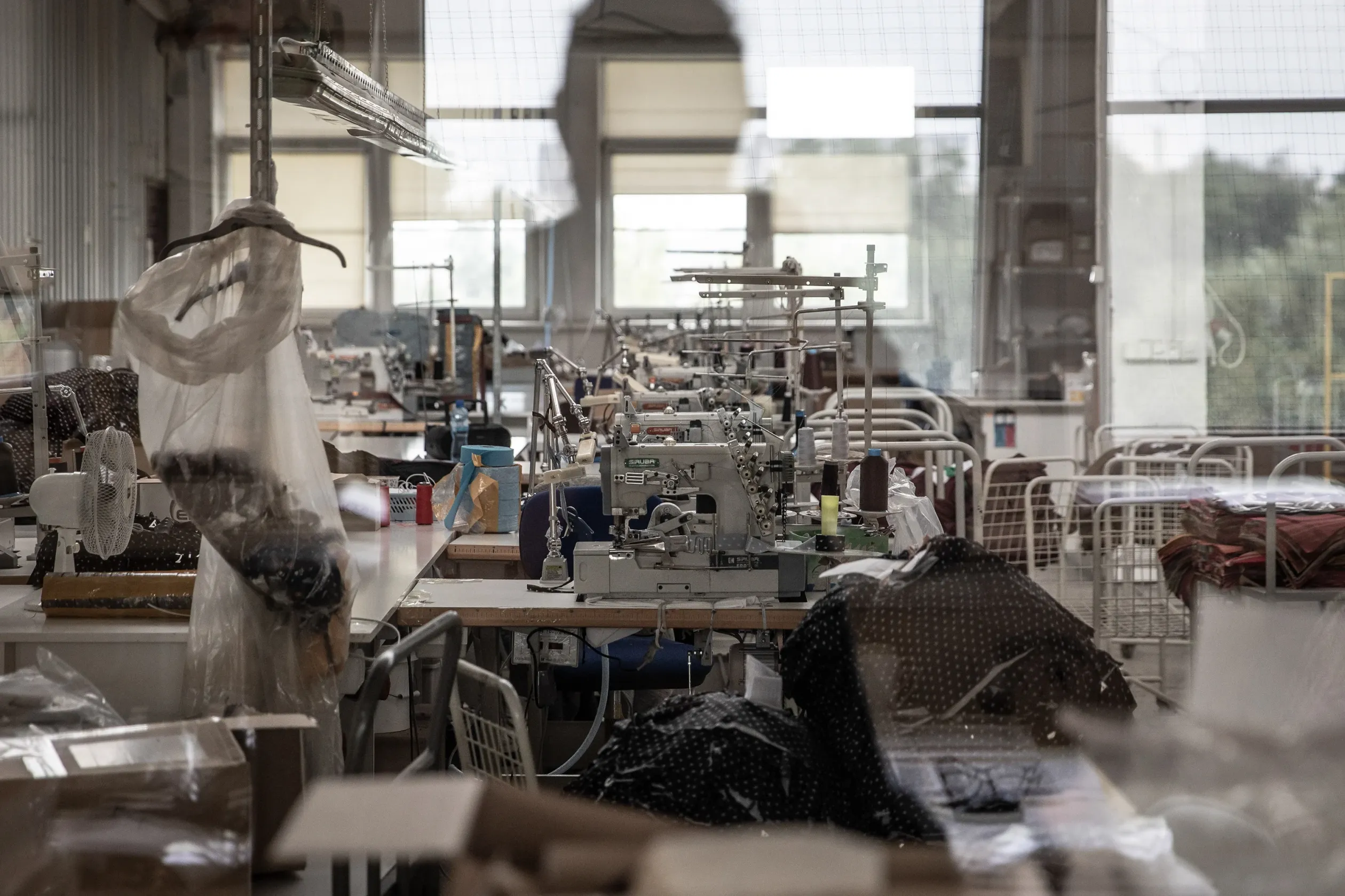
When she gets home, she comes across a public tender on the internet that the Joan Sewing Company had won to make clothes for the Military Intelligence Service. The tender is for the "purchase and delivery of uniforms and equipment." She even finds the sewing company's jackets and clothes that were hanging up. They are well-known foreign brands: Weill Paris and S. Oliver. The price of a single jacket is about 700 EUR.
The Polish journalist applied for work at other sewing shops in the Łódź area and came across virtually the same situation everywhere as she had at Joan. The companies typically contract sewing workers for minimum wage and pay the rest under the table. There wasn't much difference in working conditions either. In 2023, one of the most important regions of the Polish light industry will be characterized by starting salaries that at best just barely reach the current legal minimum of around 2700 złotys – roughly equivalent to 590 EUR – and by workers who are registered for a fraction of the normal working hours (i.e. 40 hours a week). Admittedly, the Polish journalists did encounter one law-abiding sewing shop owner, granted the individual wasn't Polish.
This industry was once driven by an endless workforce and endless demand in Poland. During the socialist era, Łódź and its surroundings were the center of the textile industry. Then came the nineties: the major factories closed down, unemployment in the region rose to 20%, many seamstresses were looking for work, and people were being treated like animals. At that time many individuals were making fortunes. These businesses are now being run by the children of the founders, but those who struck it rich were primarily from the older generation," said one informant, who has worked in the industry for more than twelve years and has spent that time with some of the region's biggest companies. Today, the biggest Polish and foreign brands all have their products sewn in this region: from Bonprix and Hugo Boss to Answear. Even brands such as Tommy Hilfiger, H&M, Zara, Adidas, Nike, Converse, Lacoste, Levi Strauss, etc. have products made in Poland. They also sew clothes for some of Poland's top designers, which are then sold in their exclusive stores in central Warsaw.
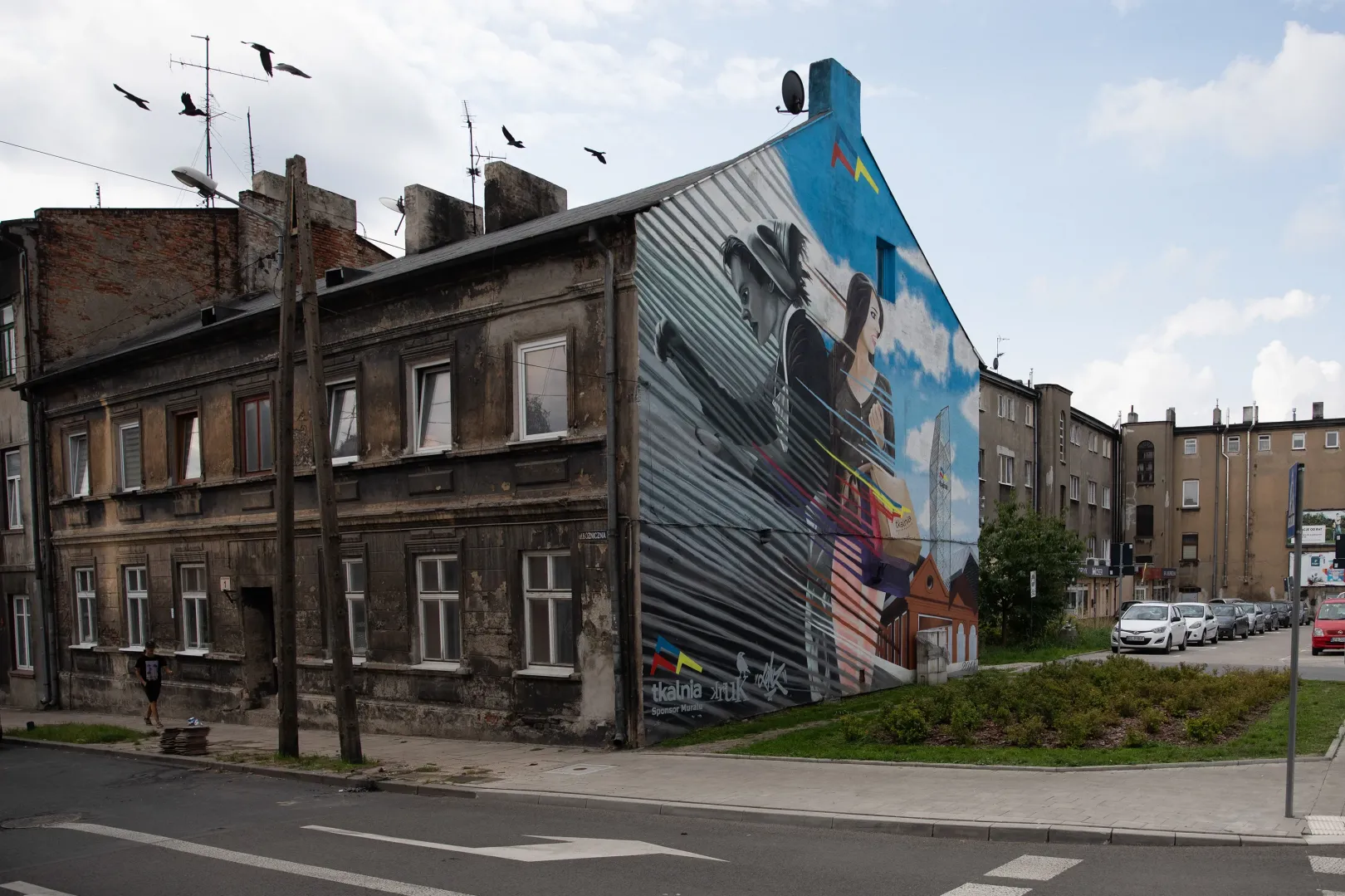
According to data from the Fashion Industry Entrepreneurs Association Lewiatan, the clothing industry employs 100,000 of the 37.7 million people in Poland, and the textiles, clothing, leather and footwear sector accounts for 1.5% of the country's GDP. The sector has 21,000 registered companies, but only 2 percent of these are large companies. Meanwhile, half of the clothing companies (also) sew for the Western market, usually having long-term relationships with such partners. Last year, Poland was the world's 12th (or 11th according to other sources) largest clothing exporter, and the Polish fashion industry ranks third in the European Union in terms of both the number of factories and the number of people employed, according to Lewiatan.
Tito's picture still hangs to this day
In the 1980s, textiles was still the second most important industry in Yugoslavia. Anyone who hopped over the border from Hungary to the market in Subotica would come home with full shopping bags. And extended postings to Yugoslavia were considered a reward for families who were used to dressing in the uniform, boring fashion typical of Hungary's shortage economy.
Then came the nineties, and everything collapsed because of the Yugoslav Wars. At the time, Ilona Blesić worked as a seamstress at the famous Željezničar factory in Subotica, mainly fulfilling orders for foreign clients. One night she was called in to bring the shipping papers because the Germans were going to leave with all the goods they had managed to finish. After that, there were no more orders. However, something else came in,
"Towards the end of the nineties, when Željezničar was no longer getting any work, the uniforms of wounded soldiers were sent to us from the battlefield for repair. Bullet shrapnel here, a bloody hole there, a torn trouser leg, it all had to be mended. And here we were, the women, crying as we did our work," said Ilona, gazing off into the distance.
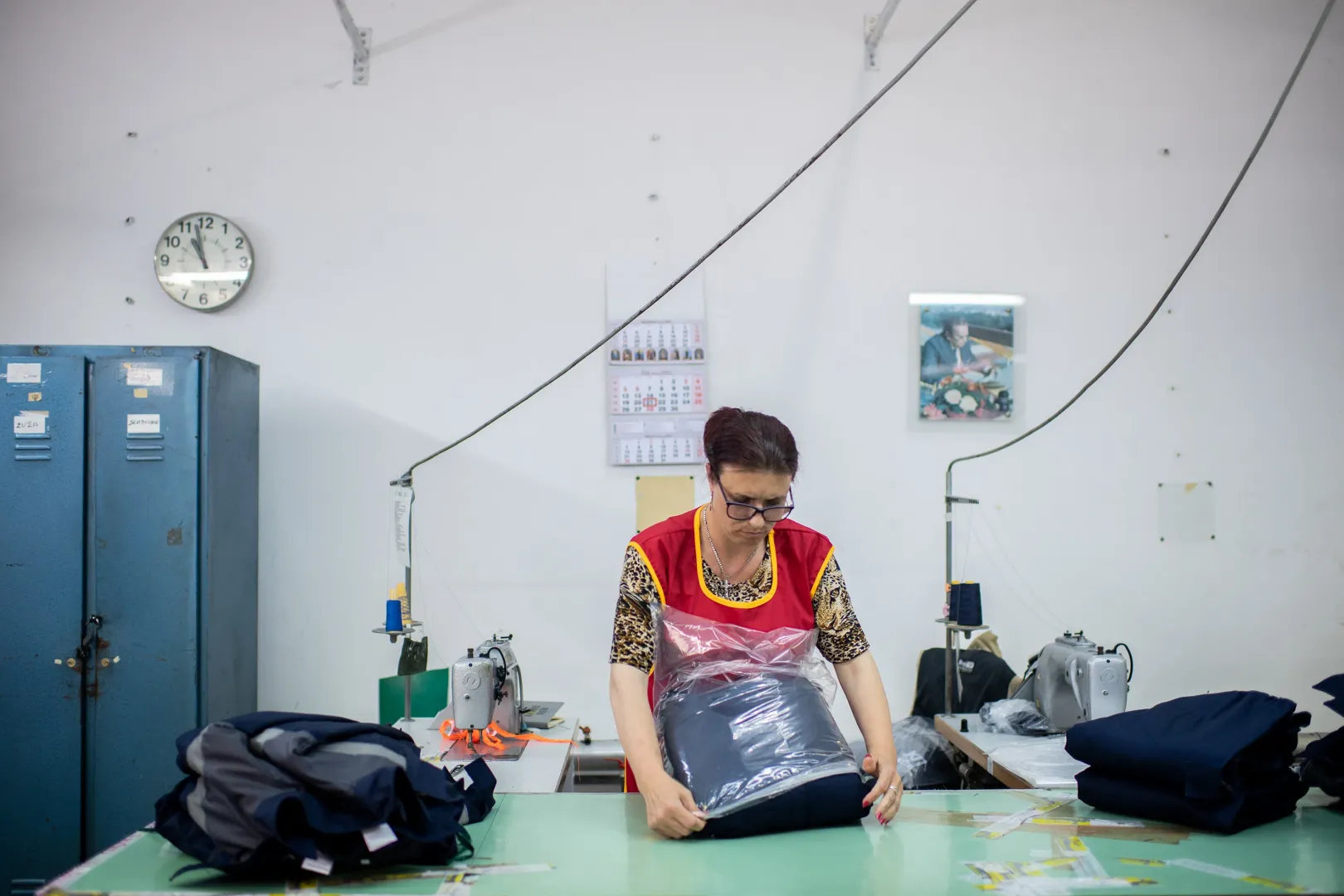
But what she recounted afterwards wasn't any more cheerful: "At one time we had two thousand workers. We were progressing very nicely but then it all went downhill. New management came in, and all our money disappeared. The thing that hurts the most is that we even gave up part of our salary for three years so that the company would buy brand new sewing machines. We gave it up because we thought it was for our mutual benefit. But then we didn't get a single dinar. We didn't get anything. They started letting us go without paying for the last three, four, five, or even six months of work. Where are all the sewing machines they bought? And then when I did the paperwork for my pension, it turned out that they hadn't even paid the contributions for four years. I just barely got a pension, but the ordinary seamstresses hardly got anything." She still sews quilts at home, which she explains as a way of making herself feel useful as long as she is able to do it.
Today, Željezničar is a so-called sheltered workshop with forty-two employees, twenty-six of whom have a disability. Tito's picture still hangs on the facility's wall.
The working conditions of the seamstresses at Calzedonia's Apatin branch are also far from ideal. Women who have since left the factory in Vojvodina reported that they work standing up for 8 hours and are only allowed a bathroom break twice during their shift. The management did not allow the province's journalists to enter, so they traveled to the southern part of the country and found that wages fall from north to south, just as they do in Hungary from west to east.
The current situation of Serbia's TCLF sector is not much different from the one in Hungary presented in the first two articles of this series: the industry is in a downward spiral. Of course, there are differences, for example in the number of workers. While an estimated 40,000 people are employed in the sector in Hungary (9.7 million), the number of employees in Serbia (6.8 million), despite having dropped to 30 thousand in the early 2000s, has just barely managed to double in the last 20 years.
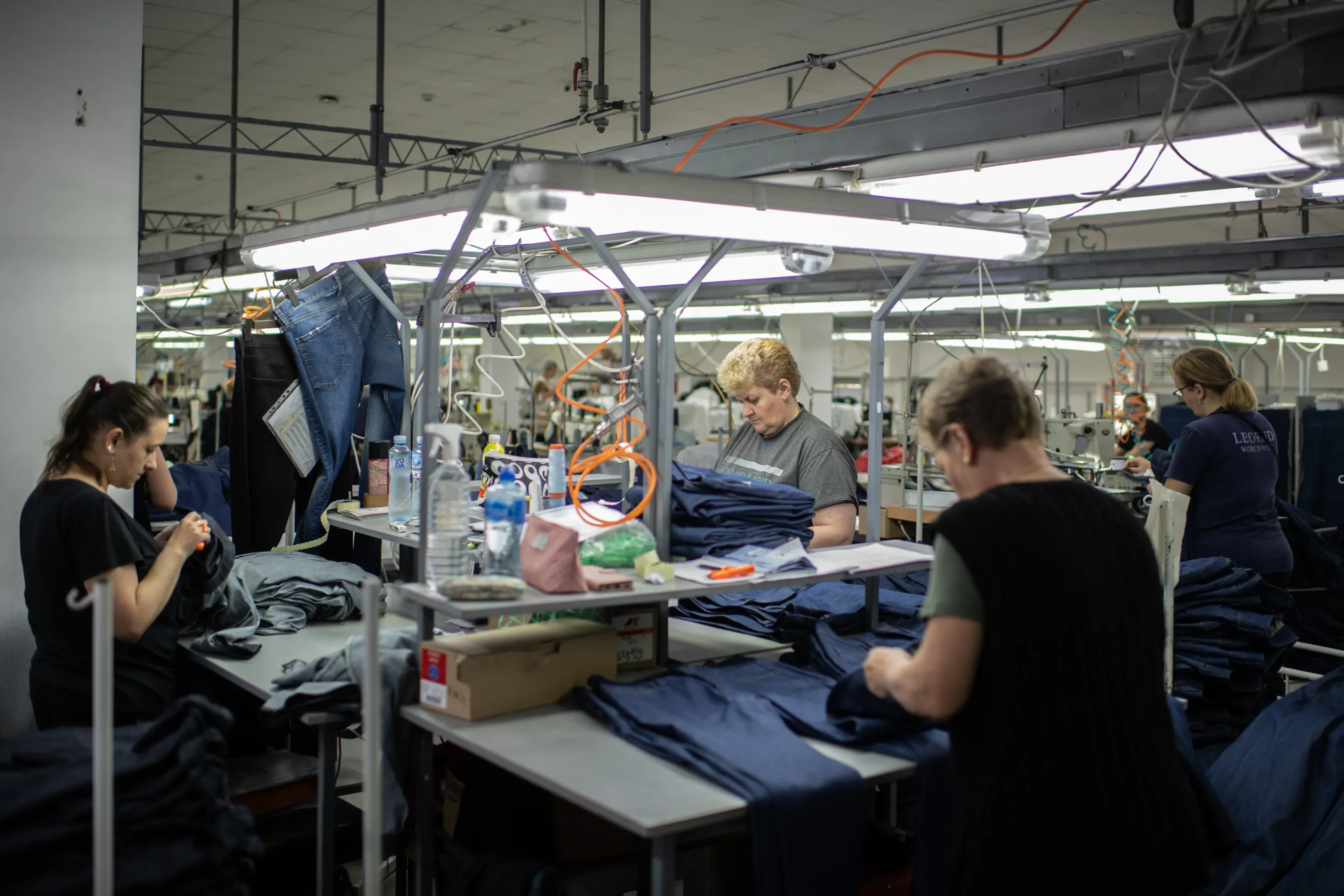
The sector currently employs 2.7 percent of the country's total workforce, and workers in the industry remain among the lowest paid of those employed. The minimum wage in Serbia is slightly lower than the 400 EUR in Hungary at just above 345 EUR. There are companies in southern Serbia and small backstreet sewing shops lurking in the shadow economy, where people work up to 6 days a week for 230-235 dinars, or a maximum of 2 EUR an hour. In the province of Vojvodina, the base salary for seamstresses is around 55,000 dinars, or around 470 EUR. Of the four pillars of the TCLF sector, the clothing pillar is the strongest in Serbia (60%), as it is in Hungary, but 24% of Serbia's production is also textile base materials (a segment that is dying out in Hungary), whereas leather and footwear make up 17%. In 2022, most of the clothing and shoes made in Serbia were exported to Italy, even though the country has been flooded with Chinese imports for years.
Some of them manufacture for the domestic market, but there are fewer of them. The majority – just as it is in Hungary – does contract work, mainly for Germany. This is how it can happen that a sewing workshop in Ada, Vojvodina, produces winter sweatshirts for the German police, as well as the sweatshirts that will later be seen on the shelves of C&A. "Romania has already been ravaged by the big companies, but more and more of them are moving production to Serbia," said one Hungarian sewing company owner. The owner believes that this phenomenon is already having a major impact on the Hungarian light industry. Others also see certain parts of the Balkans as competition for Hungarian production (alongside, of course, the cheap Chinese and Turkish manufacturers that impact the entire region).
We're still no Bangladesh
It's not just China's and Turkey's sewing companies that manufacturers of the three aforementioned countries complain about, but also the cheap clothing coming from those regions, the lack of government subsidies and, above all, the plummeting number of skilled seamstresses.
The situation of seamstresses is also linked to the state of education and the shortage of skilled workers. In Poland, for example, the decision to end vocational training in the field was a blow to the industry. Older seamstresses are retiring and there isn't anyone to replace them. While vocational training in Hungary is barely crawling along with 2,000 students (that is, where it exists, because it also varies greatly from region to region), Poland's association of entrepreneurs is lobbying the Polish government to start a different kind of vocational training. By the end of 2024, their efforts are expected to result in the launch of industrial training centers for the clothing industry, which will provide training for teachers and apprentices alike at 4 locations across the country.
The shortage of sewing workers and a replacement workforce is not only a problem in Eastern Europe, but throughout the continent: one Hungarian sewing shop owner quoted the Italian leatherworkers' weekly newspaper, which said that Europe's entire TCLF sector could easily absorb 400,000 people in an instant.
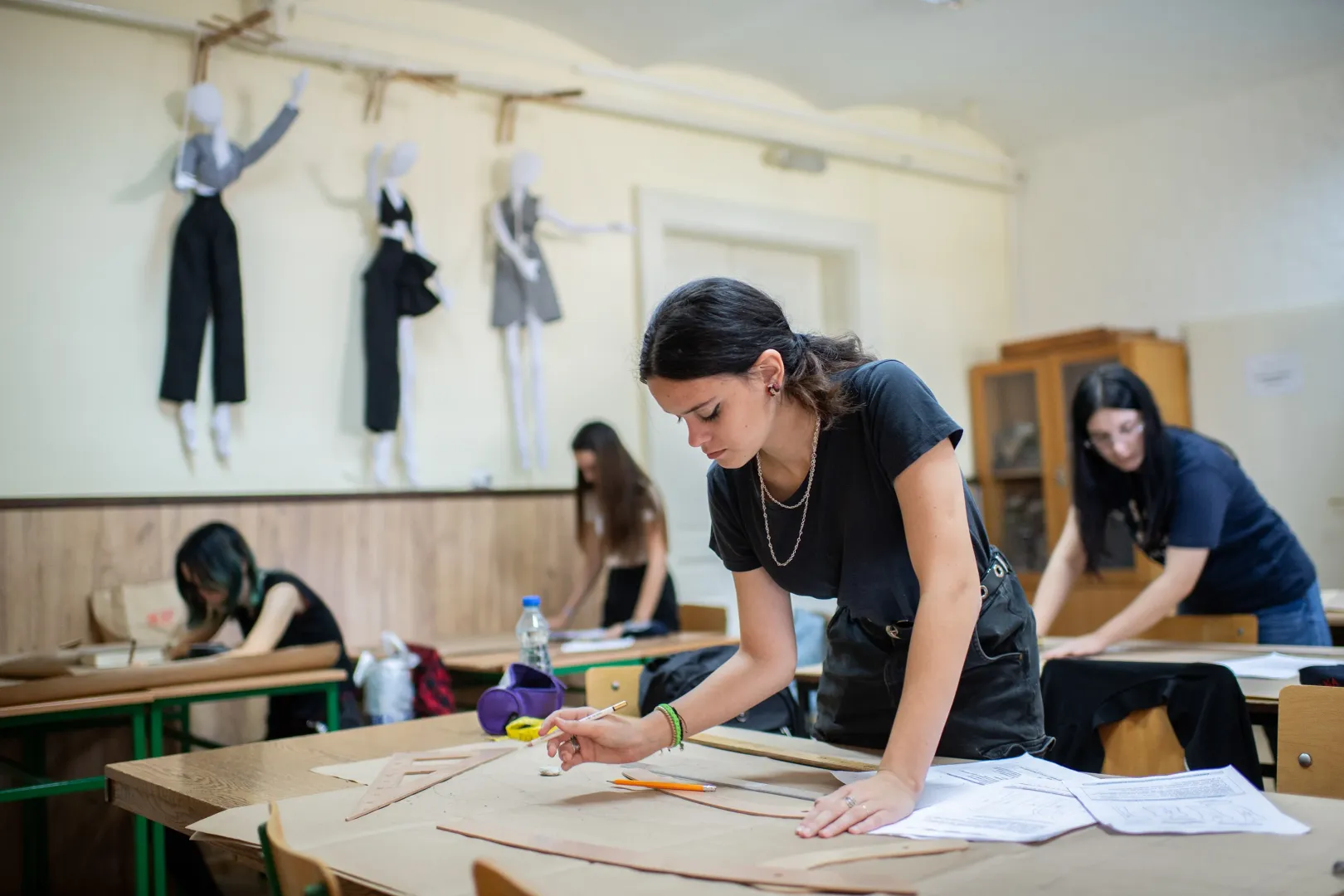
As in the other two countries, the idea of toiling for the minimum wage is not attractive to young people in Serbia, and the answer is temporary labor, something that is rarely seen in Poland and Hungary: for the Indonesian, Nepalese and Bangladeshi needle-workers who are increasingly filling the sewing shops, a monthly salary of about 420 EUR is enough. Industry stakeholders attribute the EU membership of Hungary and Poland to the fact that in these two countries, as soon as temporary workers get their official papers, they often vanish the next day – only to reappear in some large city in Western Europe. Poland attempted to bring in workers from Ukraine and Belarus, but this did not solve the problem: they were few in number and lacked the necessary skills.
The chronic shortage of seamstresses is something that no government anywhere is able or willing to deal with. In Hungary, the launch of the Hungarian Fashion and Design Agency in 2019 has helped to break the deadlock, but everyone we spoke to said that more is needed to save the industry (we will explore this in more depth in the next and final article of this series).
One thing that all three countries have in common is that they produce for both the domestic and international markets and are therefore at the mercy of customers from Western Europe. In a number of interviews that we conducted in Hungary and Poland, industry professionals mentioned that representatives from Western brands are forcing unfair price contracts on Eastern European manufacturers. "Factory owners are up against the wall because they don't want to lose customers. So they agree to these contracts in order to keep the company afloat, but as a result, they don't have the money to pay workers," said Joanna Szabunko of Poland's Buy Responsibly Foundation. Hungarian sewing company executives explained to us that they simply could not take on a job at a price below cost, because then not only would there not be any income or profit, there would be no wages.
Although sewing companies in all three countries also take on work for public institutions, armed forces, and their own domestic markets (in addition to their contract work from the West), consumers in the three countries have diverging tastes: Polish customers specifically seek out domestic brands, meanwhile Hungarians and Serbs remain under the spell of the big global brands. As such, these two countries see significantly lower levels of domestic orders.
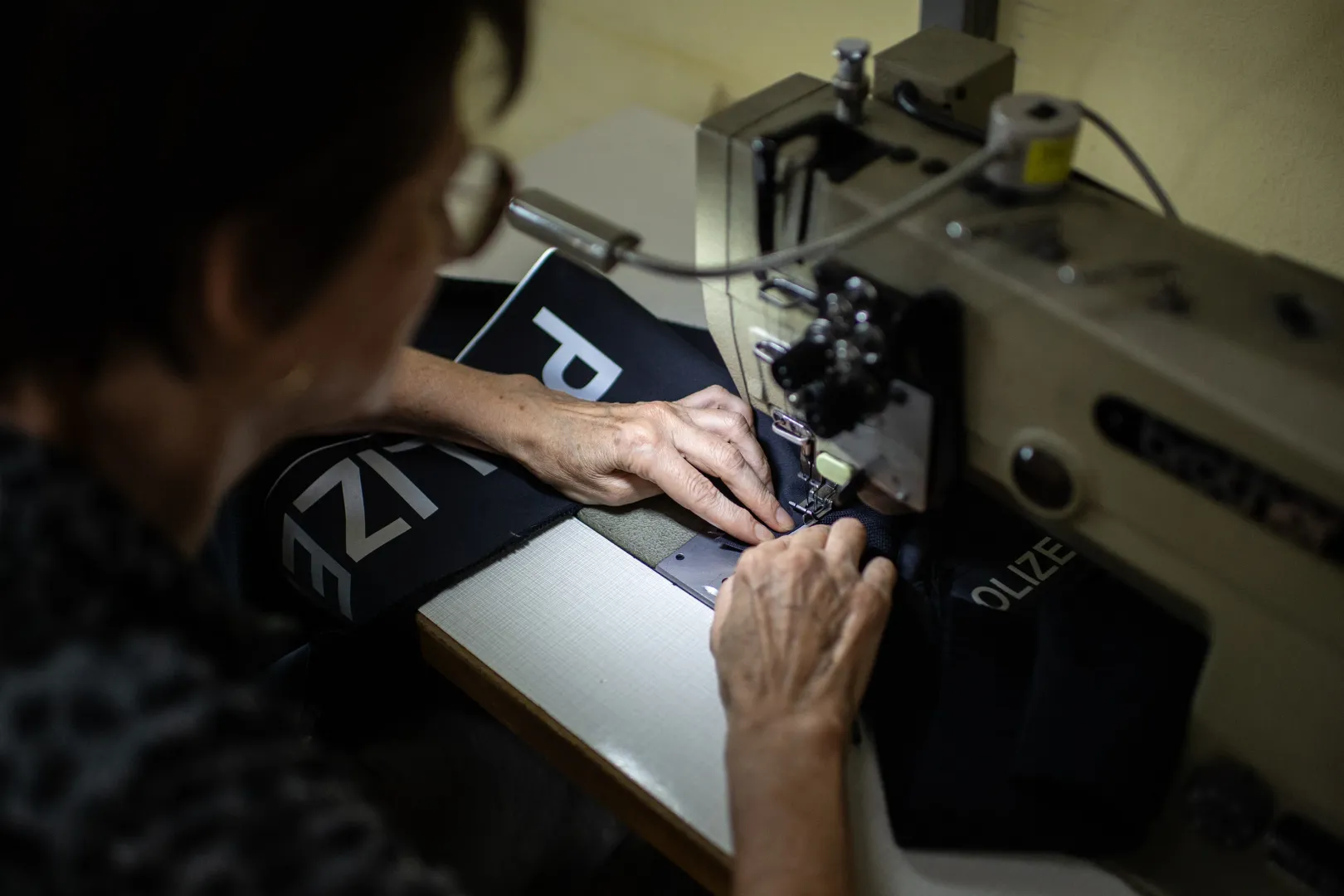
The current state of the industry in Hungary has been described in detail in the first two articles of this series. The only thing missing is the numbers, but the lack of reliable data on much of the industry is an indication of its prestige. What is clear, however, is that output in all other industries has grown steadily over the last 20 years, except for clothing, which has remained roughly the same despite inflation. In Hungary, the TCLF sector accounted for around one percent of the total employed workforce in the national economy in 2022, which means that one out of every 100 domestic jobs was linked to textiles, clothing, leather, and footwear.
Ernő Molnár, Professor of Economic Geography at the University of Debrecen, aggregated data on exports for two groups of goods (covering the majority of textile clothing products, but not including other textiles, or leather and footwear). The data showed that Hungary's total exports in 2022 were around one billion US dollars, equivalent to that of Haiti or Slovakia, the latter having a population of 5.5 million. This put Hungary at 47th among global exporters.
Other countries in this part of the world, Poland (11th), the Czech Republic (29th), Romania (34th), Bulgaria (40th), and Slovakia (45th) are also ahead of Hungary in the world rankings, with Poland's clothing exports ten times the value of ours.
Part of the reason we launched this series of articles is to find out whether we in Central and Eastern Europe are also experiencing the kind of human rights abuses and exploitative working conditions that we regularly hear about from the Far East and African sewing companies. Especially since April 2013, when the Rana Plaza in Savar, Bangladesh, collapsed due to structural defects and overloading, the world has been dealing with a global crisis in the clothing industry. The disaster claimed the lives of 1,134 people, including children who were at the daycare center in the building at the time, and injured more than 2,500. In 2019, a German organization investigated the working conditions of workers in a Sri Lankan sewing factory that produces some of Europe's best-known fast fashion brands. It found that seamstresses there worked 80 hours a week, 35 of which were overtime; yet the law allows a maximum of 45 hours a week with 12 hours of overtime (which is already in itself a lot). Some of the textile workers did not even receive the legal minimum wage, despite the fact that even that would not have been enough to live on.
Although seamstresses in Central and Eastern Europe don't always even receive the legal minimum wage, at the same time, we did not encounter the kind of inhumane conditions reported in the Far East. And in terms of working conditions in the three countries, the most common – though by no means insignificant – problems were cited to be noise and heat. Thus, although the situation is far from rosy, Poland, Serbia, and Hungary are far from being like Sri Lanka and Bangladesh.
This article was made possible by support from the Investigative Journalism for Europe (IJ4EU) fund.
